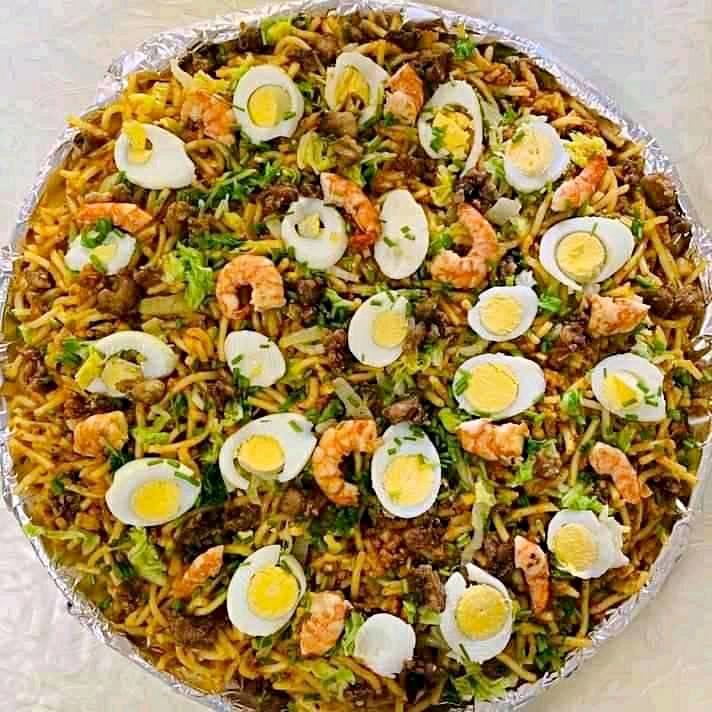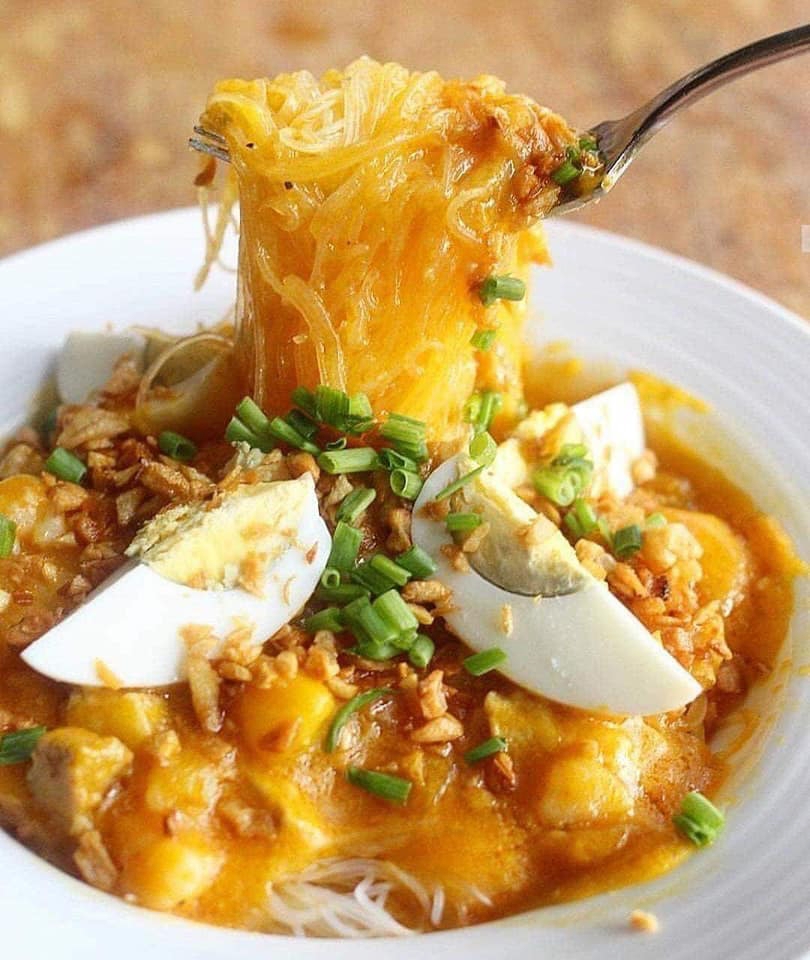
Palabok is a hearty noodle dish that is equally flavorful and visually appetizing. If you grew up in the Philippines, chances are you’re very familiar with this popular rice noodle dish that is a staple during special occasions like fiestas and birthdays.
If you’re vaguely familiar with Filipino cuisine, palabok is that noodle dish with a yummy yellow-orange sauce (though there are no oranges involved in making one).
The base ingredient of palabok is its soft noodles (made of rice). But the taste comes from the thick sauce—usually made with shrimp stock, some pork broth, and ground pork—and various toppings, which is usually made up of shrimps, tinapa flakes, chicharon, slices of hard-boiled eggs, and sprinkling of spring onions. The sauce’s bright yellow-orange hue comes from annatto (atchuete) seeds.

That’s the beauty of palabok, too—it’s highly customizable. Some add tofu, scallions, fried garlic, or even squid rings as toppings.
When it comes to the taste, it’s unlike any other noodle-based Pinoy dish. It’s got a nice salty taste, but nothing too overpowering. The difference in flavor usually comes from the toppings that come with it.
Palabok is so ubiquitous and popular in the country that even Jollibee, one of Asia’s biggest fastfood restaurants, has the dish in their menu (which does taste good). There are also pre-packaged products sold in supermarkets, which allows anyone to cook the dish instantly anytime.
Traditionally, palabok is served in a bilao, which adds to its visual appeal because the toppings are usually beautifully and almost symmetrically arranged on top of the noodles. It’s the person eating the dish that mixes everything together on his or her plate.

Normally, the delightful noodle dish would last for up to five days when kept in an air-tight container and put in a freezer. (You can just them reheat it over a pan or using a microwave). But based on experience, palabok spoils rather quickly, especially when the weather is hotter than usual.
There are several regional versions of the palabok, which mainly differ in the use of noodles. Pancit palabok is made with a thin rice noodle called bihon, while the pancit luglug is made with cornstarch noodles, usually thicker than bihon. Pancit Malabon, on the other hand, is made with thick rice noodles, and which often has more seafood as toppings.
Whichever version you’re having, palabok is best eaten with calamansi to add another layer of flavor (sour). Simply squeeze the calamansi on the palabok, mix, and you’re good to go.















